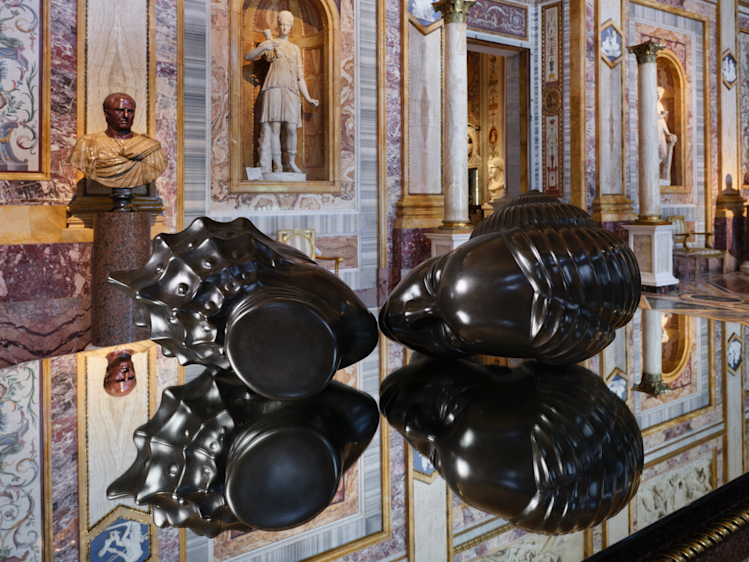
Wangechi Mutu
Black Soil Poems
From June 10 to September 14, 2025, Galleria Borghese presents, for the first time within the residence of Cardinal Scipione, a solo exhibition by Kenyan-American artist Wangechi Mutu, titled Black Soil Poems, curated by Cloé Perrone. Like the recently concluded exhibition dedicated to the Baroque poet Giovan Battista Marino, this project also stems from the museum’s ongoing interest in poetry. Conceived as a site-specific intervention, it unfolds throughout the museum’s interior galleries, its façade, and the Secret Gardens. It challenges classical tradition through suspensions, fragmented forms, and newly imagined mythologies, establishing a multilayered dialogue between the artist’s contemporary language and the symbolic institutional authority.
The title evokes the dual nature of Mutu’s practice: poetic and mythological, yet deeply connected to contemporary social and material contexts. “Black soil” — rich and malleable under the rain, almost like clay — appears across multiple geographies, including the Secret Gardens of the Galleria Borghese, which resonate with the artist’s imagination. From this soil, the sculptures seem to emerge, as if molded by a primordial force, giving shape to stories, myths, memories, and poems. The metaphor underscores the generative and transformative power of her work: rooted in materiality, yet open to multiple future interpretations.

Installation view, Wangechi Mutu: Black Soil Poems, Galleria Borghese, Rome, Italy, 2025. Photo: Agostino Osio
Wangechi Mutu’s intervention introduces a new vocabulary into the historical and symbolic architecture of the Galleria Borghese. Through sculpture, installation, and moving image, the artist proposes an innovative approach to the museum space — one that challenges hierarchy, permanence, and fixed meaning. Her works question the visual weight and authority of the collection through strategies of suspension, fluidity, and fragmentation. In doing so, the museum is no longer presented as a static container of objects, but as a living organism, in continuous transformation, shaped by loss, adaptation, and reconfiguration.
The exhibition is structured in two complementary sections. Inside the museum, Mutu radically reconsiders spatial orientation: her sculptures never obscure the Borghese collection; rather, appear as subtle additions — ethereal presences that hover in the air, float lightly, or rest on horizontal surfaces. Works such as Ndege, Suspended Playtime, First Weeping Head and Second Weeping Head defy gravitational logic, delicately hanging from the ceilings and framing new lines of sight. This act of suspension is not merely formal: it introduces a shift of historical narratives and material hierarchies. The museum’s visual field is redrawn, opening new modes of perception to our gaze.